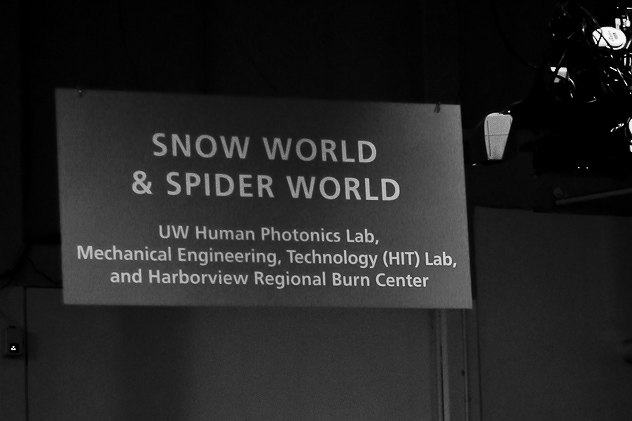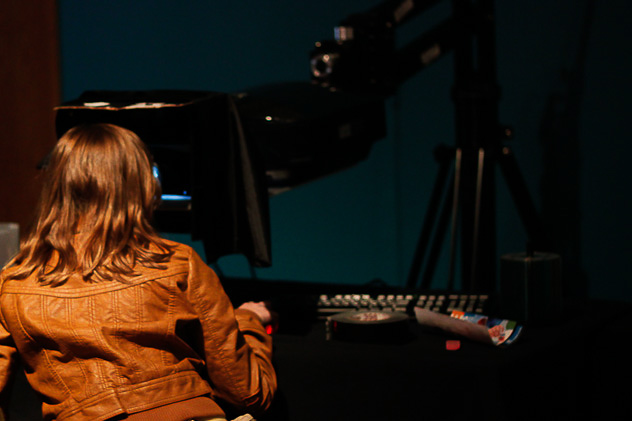Hunter Hoffman uses virtual reality to reduce both…

Hunter Hoffman uses virtual reality to reduce both fear and pain. At the Human Interface Technology Lab at the University of Washington, Hoffman researches ways to reduce pain and suffering using computer worlds that look and feel a lot like video games.
Donna Fontaine, now of Cynergy Systems studied at the HIT Lab and was one of several researchers on hand to explain how all this works at Life Sciences Research Weekend. Fontaine mentioned that the more convincing a world is, the better it works to help reduce the experience of pain.

Helping guide visitors through SnowWorld today are volunteers Devon Anne Brown from the University of Washington, and Aubriana Teeley, on staff at Harborview Burn Center, part of UW Medicine. Teeley takes this treatment straight to patients.
Below is a video which documents and demonstrates SnowWorld, shared by ScienCentral News:
About the Human Interface Technology Laboratory
The Human Interface Technology Laboratory at the University of Washington is a multi-disciplinary research and development lab whose work centers around human interface technology. Lab researchers represent a wide range of departments from across the University of Washington campus, including engineering, medicine, education, social sciences, architecture and the design arts.
About the UW Burn Center at Harborview
Since its opening in 1974, the UW Burn Center at Harborview has treated more than 15,000 patients, including almost all burn patients in Washington. Harborview was one of the first hospitals to adopt the approach of early removal of burned tissue, and was the first site of a major clinical trial for a temporary artificial skin graft, a technology that continues to advance. The survival rate at Harborview’s burn unit is about 96 percent.
Especially important is the reduced length of hospital stay for most patients, enabling them to return to their lives as soon as possible. Most patients are back at work within a few months and children rarely, if ever, miss a year of school.
By Brian Glanz for NWABR. Please reuse and remix! We share with a Creative Commons Attribution License.

A Guide to the Life Sciences Research Weekend Event Blog « Life Sciences Research Weekend 2010 7:52 pm on November 14, 2010 Permalink |
[…] Virtual reality therapy with SnowWorld […]
Thank you for visiting Life Sciences Research Weekend « Life Sciences Research Weekend 2010 8:07 pm on November 14, 2010 Permalink |
[…] Virtual reality therapy with SnowWorld […]